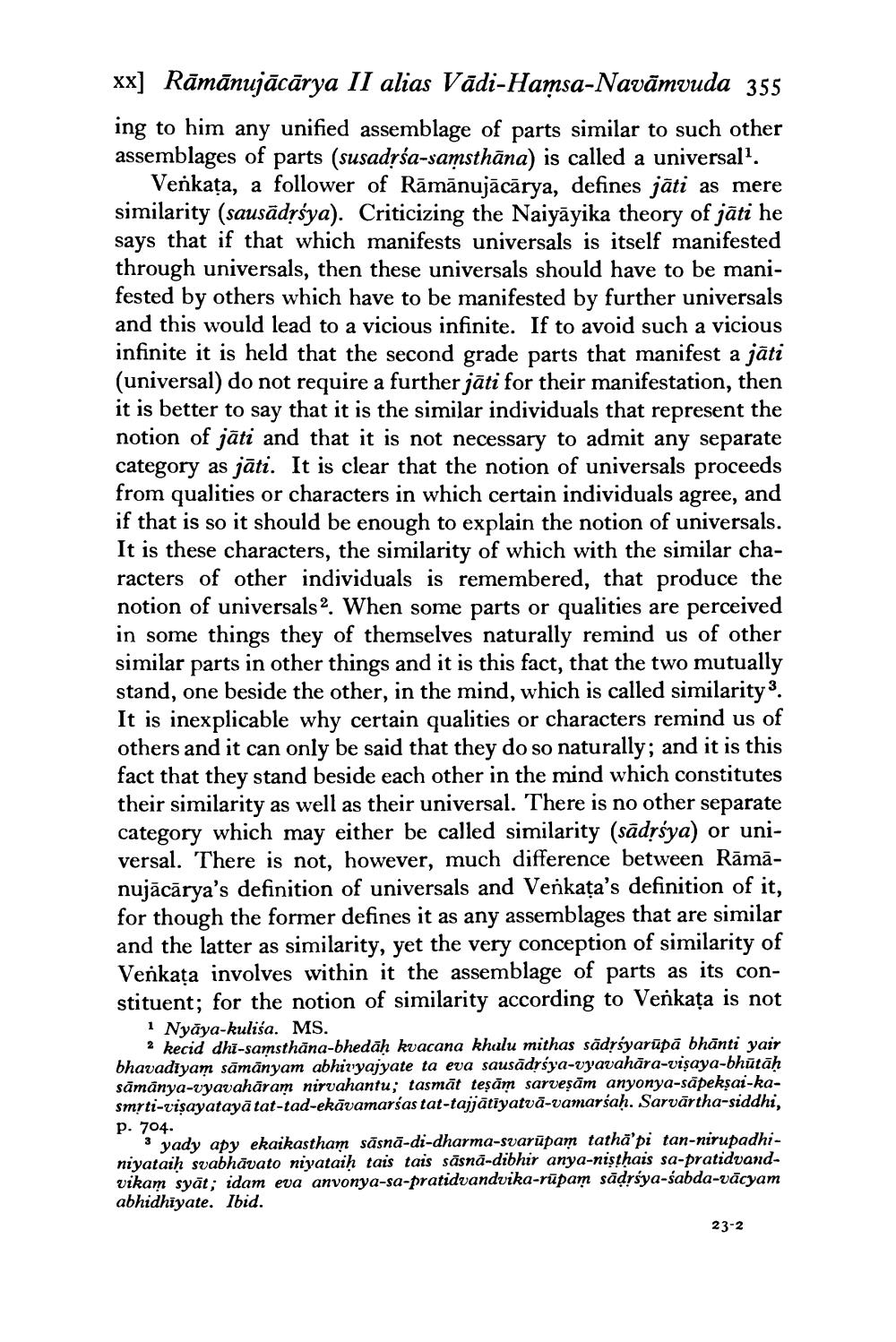________________
xx] Rāmānujācārya II alias Vādi-Hamsa-Navāmvuda 355 ing to him any unified assemblage of parts similar to such other assemblages of parts (susadrśa-samsthāna) is called a universal".
Venkata, a follower of Rāmānujācārya, defines jāti as mere similarity (sausādrśya). Criticizing the Naiyāyika theory of jāti he says that if that which manifests universals is itself manifested through universals, then these universals should have to be manifested by others which have to be manifested by further universals and this would lead to a vicious infinite. If to avoid such a vicious infinite it is held that the second grade parts that manifest a jāti (universal) do not require a further jāti for their manifestation, then it is better to say that it is the similar individuals that represent the notion of jāti and that it is not necessary to admit any separate category as jāti. It is clear that the notion of universals proceeds from qualities or characters in which certain individuals agree, and if that is so it should be enough to explain the notion of universals. It is these characters, the similarity of which with the similar characters of other individuals is remembered, that produce the notion of universals 2. When some parts or qualities are perceived in some things they of themselves naturally remind us of other similar parts in other things and it is this fact, that the two mutually stand, one beside the other, in the mind, which is called similarity 3. It is inexplicable why certain qualities or characters remind us of others and it can only be said that they do so naturally; and it is this fact that they stand beside each other in the mind which constitutes their similarity as well as their universal. There is no other separate category which may either be called similarity (sādrśya) or universal. There is not, however, much difference between Rāmānujācārya's definition of universals and Venkata's definition of it, for though the former defines it as any assemblages that are similar and the latter as similarity, yet the very conception of similarity of Venkața involves within it the assemblage of parts as its constituent; for the notion of similarity according to Venkața is not
1 Nyāya-kulisa. MS.
2 kecid dhi-samsthāna-bhedāḥ kvacana khalu mithas sādrsyarūpā bhānti yair bhavadiyam sāmānyam abhiriyajyate ta eva sausādrsya-vyavahāra-visaya-bhūtāh sāmänya-vyavahāram nirvahantu, tasmāt teşām sarveşām anyonya-sāpekşai-kasmrti-visayatayā tat-tad-ekāvamarías tat-tajjātiyatvā-vamarśaḥ. Sarvārtha-siddhi, p. 704.
3 yady apy ekaikastham sāsnā-di-dharma-svarūpam tathā'pi tan-nirupadhiniyataih svabhāvato niyataih tais tais sāsnā-dibhir anya-nisthais sa-pratidvandvikam syāt; idam eva anvonya-sa-pratidvandvika-rūpam sādrsya-sabda-vācyam abhidhīyate. Ibid.
23-2




